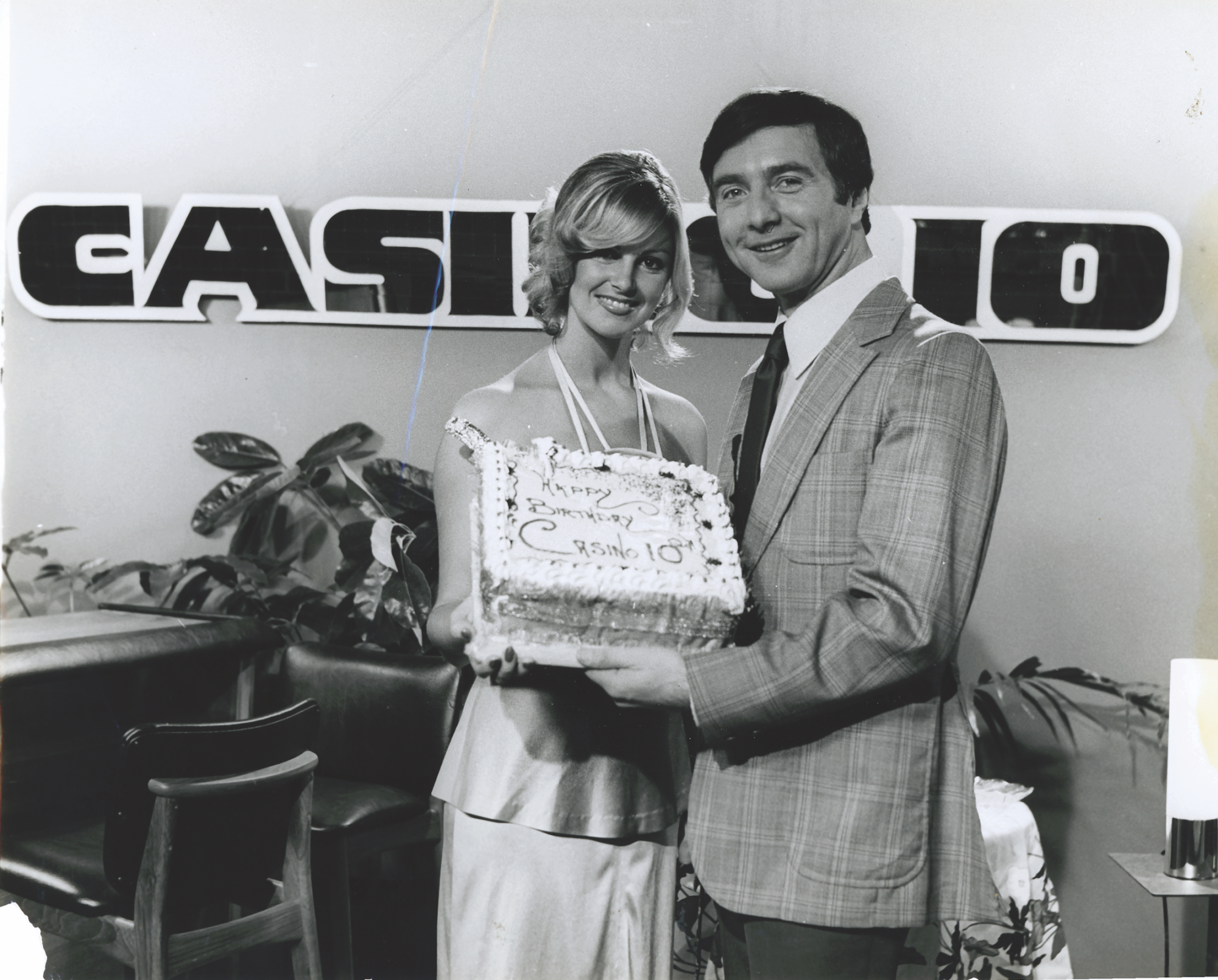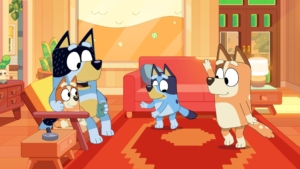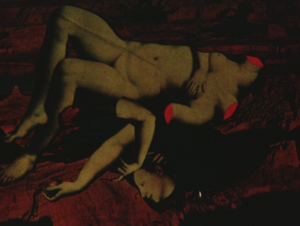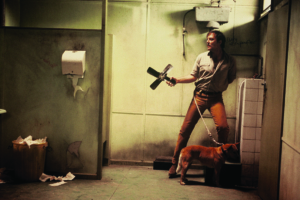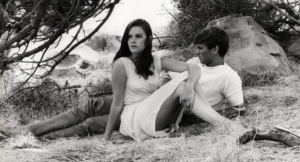When Graham Kennedy appeared for the last time on In Melbourne Tonight (IMT) on 23 December 1969, pre-eminent Nine Network newsreader Eric Pearce crowned him the ‘King of Television’. For many, it seemed like the end of an era. In taking his final bow, the ‘king’ brought one performer forward from the line-up to bow with him on stage: Philip Brady. ‘It was a well-earned moment for Philip’, says long-time friend Mike McColl Jones,[1]Mike McColl Jones, email to the author, 12 May 2018. who was Kennedy’s comedy writer from 1963. As Kennedy’s straight man, Brady was the constant butt of his pranks and jokes, but, as he reflects, ‘I didn’t really mind so much because it made me a household name and, in those days, everybody was watching television.’[2]Philip Brady, interview with John Fife, National Film and Sound Archive of Australia (NFSA), Melbourne, 23 August 2013 – 13 January 2014. Perhaps, in inviting him to share that bow, Kennedy was seeking to make amends, give credit where it was due.
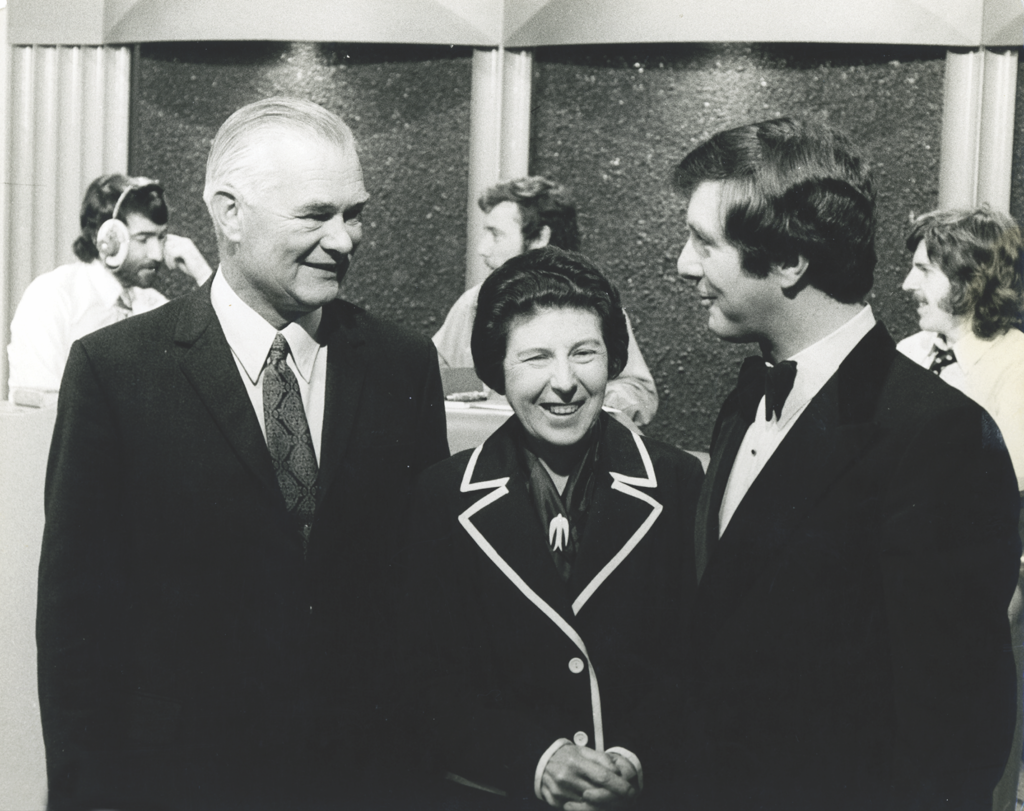
These early years of television were formative to Australia’s screen landscape, yet so many of our records of this period have been lost – most of the taped IMT episodes stored at Nine’s studios, for instance, were junked or wiped when the station ran out of space. As such, laments Dr Derham Groves, who curated the Tee Vee at Sixty exhibition at the University of Melbourne,
the history of early television in Australia is largely an oral history. By the same token, the first decade of television in Australia is gradually – dare I say, rapidly – passing from living memory and, sadly, once it’s gone, it’s probably gone forever.[3]Derham Groves, TeeVee at Sixty: Celebrating Sixty Years of Melbourne Television, 1956–2016, University of Melbourne Library, Melbourne, 2016, p. 31.
This year, Brady celebrates sixty years in media broadcasting; on 11 June, he was awarded the Medal of the Order of Australia for outstanding service.[4]‘3AW Presenter Recognised in Queen’s Birthday Honours List’, 3AW website, 11 June 2018, <https://www.3aw.com.au/3aw-presenter-recognised-in-queens-birthday-honours-list/>, accessed 16 August 2018. Who better, then, to offer testimony on television’s beginnings in Australia than someone whose career – particularly on IMT – formed a substantial part of it? I speak to Brady about the medium’s early years, when variety reigned supreme.
As the variety format had already proven enormously popular with American and British audiences, Australian programmers were keen to emulate it.
‘Good evening, and welcome to television.’[5]For more on the early history of television in Australia, see the ‘TV at 60’ articles on Television.AU, <https://televisionau.com/category/tv-at-60>, accessed 16 August 2018.
When Bruce Gyngell uttered these well-rehearsed words on 16 September 1956, he became the first face, though not voice, on Australian television. The owner of the new station, TCN-9, was print magnate Frank Packer. His two studios in Willoughby, in Sydney’s North Shore, were still under construction, and, in the mad rush to be the first on air, he had the station set up part of its broadcasting operations in a church hall in inner-suburban Surry Hills. On 4 November, HSV-7 became Melbourne’s first TV station, followed by GTV-9 on 19 January 1957. The fascination with the new, ‘miraculous’ medium of television was such that Australians would have been drawn to anything – even a test pattern. Most people watched television in shop windows, or at a neighbour’s house. And, if they could afford a TV set (equivalent to about six to ten weeks’ average pay at the time[6]See ‘Television Comes to Australia, 1956’, Fairfax Syndication, <http://professional.fairfaxsyndication.com/Collection/Television-Comes-to-Australia–1956-FXB81272>, accessed 16 August 2018. ), they had to purchase a licence to own a receiver, which then–prime minister Robert Menzies made compulsory from 1 January 1957.[7]Helen Tully, ‘Licence to … Watch TV?’, NFSA, <https://www.nfsa.gov.au/latest/radio-and-tv-licences>, accessed 16 August 2018.
Given the significant costs involved in starting up a television station, the early operators in the commercial sector sought ways to offset expenditure through affordable content. Not only did they purchase programs from the United States and Britain, but they also, chronicles TV scholar Albert Moran, ‘commissioned one of the cheapest forms of local content, namely variety shows’.[8]Albert Moran, ‘Three Stages of Australian Television’, in John Tulloch & Graeme Turner (eds), Australian Television: Programs, Pleasures and Politics, Allen & Unwin, Sydney, 1989, p. 3. Along with quiz shows, variety programming in the ‘first stage’ of television – so-called by Moran – helped lend a distinct Australian presence to the television schedule.[9]ibid., p. 5. Thus, among the top-rated programs of 1957 were IMT and two homegrown variety shows for children, The Happy Show (later The Tarax Show) and Desmond and the Channel 9-Pins, as well as Bob and Dolly Dyer’s quiz show adapted from radio, Pick-a-Box. [10]Australian Television: A Ratings History, 1956–1998, ACNielsen Australia, Sydney, 1999, p. 16. The rest of the time slots were filled out with imported American programs like the perennially popular I Love Lucy and The Mickey Mouse Club. Journalist Sandra Hall rightly argues that the variety format was ‘a necessity – a simple format of using Australians to entertain […] it was the right programming at the right time.’[11]Sandra Hall, Supertoy: 20 Years of Australian Television, Sun Books, Melbourne, 1976, p. 85.
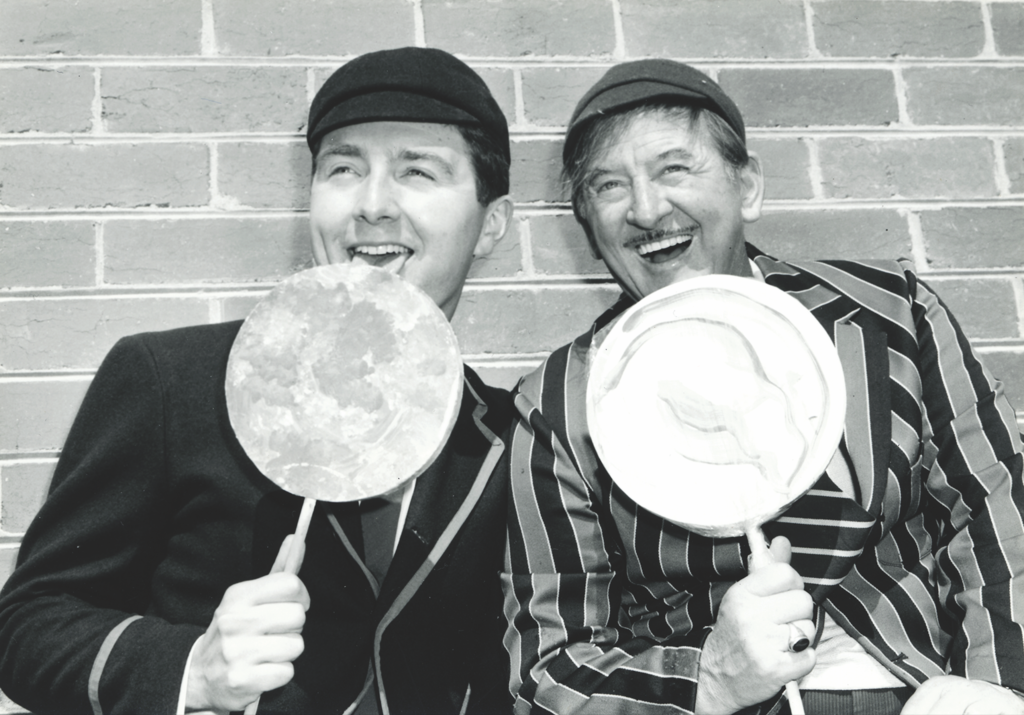
IMT, which debuted on GTV-9 on 6 May 1957, was based on ATN-7’s Sydney Tonight, which, in turn, was based on the highly successful US program Tonight with Steve Allen. But IMT wasn’t Melbourne’s first late-night variety show – that honour belongs to HSV-7’s short-lived The Late Show with Noel Ferrier, which aired a few days earlier. [12]Graeme Blundell, King: The Life and Comedy of Graham Kennedy, Macmillan, Sydney, 2003, pp. 83–4. As the variety format had already proven enormously popular with American and British audiences – in the US, it launched stars like Allen, Milton Berle (‘Mr Television’), Sid Caesar and Jack Paar – Australian programmers were keen to emulate it. Brady describes the Australian appropriation of variety television as ‘a spin-off of the days of vaudeville and burlesque’ and tells me that IMT took from these foreign shows:
IMT was a direct pinch of the American Jack Paar show. Paar was like [Kennedy], but with his own personality. There would be opening remarks, gags, a singer, and maybe a juggler and another singer, and a ballet. That’s what variety is, isn’t it?
At GTV-9, variety was actively encouraged by station owner Sir Arthur Warner, general manager Colin Bednall and program manager Norman Spencer. The studio in Richmond, formerly a Heinz tinned-food factory, was, under Bednall’s direction, designed ‘with the production of live variety in mind’.[13]Hall, op. cit., p. 33. No expense was spared as the site became ‘Television City’, and Channel Nine, the home of variety. After the Packer takeover of GTV-9 in 1960, which led to the formation of the Nine Network, Spencer defected to HSV-7 and sought to build the station’s variety profile with highly successful shows like Sunnyside-Up – though these fell short of the cultural impact of IMT.
In contrast to Kennedy’s inspired lunacy, Brady ran IMT more like a talk show … Some of these shows even rated more highly than Kennedy’s, in part because of the quality of the guests involved – Robert Morley, Ray Milland, Liza Minnelli, Shirley Bassey, John Meillon and others.
Because television was then seen as an extension of radio – Moran has labelled this stage ‘radio with pictures’[14]Moran, op. cit., p. 3. – not only were radio formats and programs adapted for the new medium, but talent was also sourced from radio. However, in going straight into television, Brady did not undergo the radio ‘apprenticeship’ that his contemporaries including Kennedy, Pearce, Geoff Corke, Bruce Mansfield, Bert Newton, Pete Smith and Hal Todd had. In fact, when Brady became Australian TV’s youngest announcer in 1958, aged eighteen, this caused resentment among some of his GTV-9 colleagues, including Corke and Todd.[15]Bruce Mansfield & Philip Brady, with Ian Oshlack, Tales from the Scrapbook, Portside Editions, Melbourne, 1993, p. xii. That same year, Brady auditioned for then–IMT producer Tom Miller, which led to sketch work alongside Kennedy. Miller, who wanted to feature Brady in the show more, also had him doing live commercials and sketches with the great Joff Ellen, whom Brady remembers as having brought ‘a fresh approach to In Melbourne Tonight’:
he not only brought his own presence [and] persona to the show, but all his old scripts – the blackouts, the comedy sketches, the one-liners he had done on stage through the years. They were all recycled for television, so, as a stand-up comic, suddenly Graham had someone to bounce off, rather than just do material on his own. Joff was the perfect foil, the perfect stooge.
A unique aspect of IMT was the time allocated to live commercials – more precisely, the sending-up or ‘rubbishing’ of commercials and sponsors. Kennedy had learned the art of the send-up from working with radio legend Clifford ‘Nicky’ Whitta on Melbourne’s 3UZ.[16]Blundell, op. cit., pp. 37, 42. Because of IMT’s exceptional ratings, the station could charge high rates for commercials until 11.30pm, which included Kennedy’s celebrated send-ups of Raoul Merton, Gloweave, Alka-Seltzer, Pal dog food and Colvan chips. One of the biggest revenue earners was the Hoover spot, which saw Brady giving a vacuum-cleaner demonstration – only the ‘suck’ had been deliberately reversed to ‘blow’, the resultant muck generating the usual laughs on the show. By the mid 1960s, IMT was earning over A£4 million and attracted more viewers per capita than any other television program across the world.[17]ibid., p. 248.
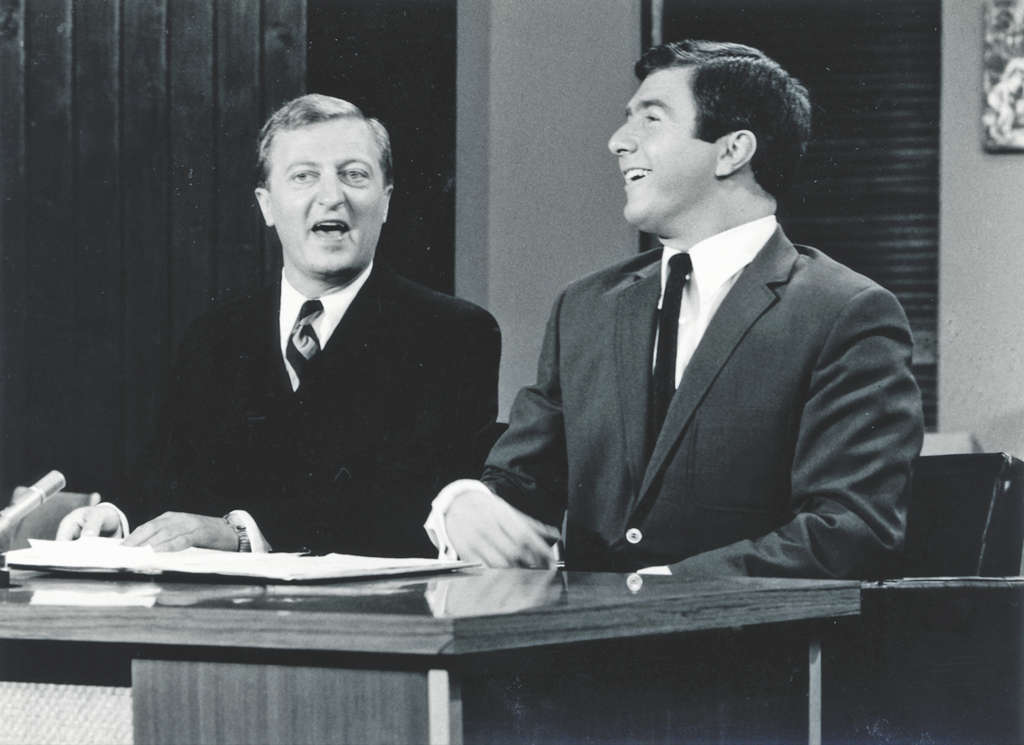
Newton had been co-presenting IMT with Kennedy since 1959, but, following the former’s collapse from ‘exhaustion’ in 1964, Brady joined the headliner at the anchors’ desk from 1965. In 1966, he also began compering the program on Thursday nights, which he did for two years. In contrast to Kennedy’s inspired lunacy, Brady ran IMT more like a talk show; he jokes about how he became ‘Melbourne’s [Michael] Parkinson’. Some of these shows even rated more highly than Kennedy’s, in part because of the quality of the guests involved – Robert Morley, Ray Milland, Liza Minnelli, Shirley Bassey, John Meillon and others. After Kennedy’s shock departure in 1969 – later compounded by Packer famously having paid Kennedy not to work[18]ibid., p. 303. – Nine attempted to carry on with different comperes, including Newton, Jimmy Hannan, Stuart Wagstaff and Ugly Dave Gray. But IMT never regained the heights of popularity it achieved during its Kennedy days. ‘When Kennedy left the scene, it was very hard to replace him,’ recounts Brady. ‘We’d been very spoiled with his antics for thirteen years, and the other comperes, by comparison, were a bit lacklustre.’
‘IMT had been right for its time,’ notes Hall, ‘but by 1975, television variety of all kinds was in trouble, and not just in Australia.’[19]Hall, op. cit., p. 94. Brady attributes this downturn to budgetary cuts, evidenced in 1971 when GTV-9 let go of 128 employees – including Brady himself.[20]Larry Schwartz, ‘Golden Anniversary for Showbiz Stayer’, The Age, 24 April 2008, <https://www.theage.com.au/entertainment/golden-anniversary-for-showbiz-stayer-20080424-ge7002.html>, accessed 16 August 2018. No doubt this was a response to changing tastes; by the late 1960s, it was increasingly difficult to attract younger viewers to the variety format. Concomitantly, Moran notes, ‘the popularity of local drama series resulted in an equally dramatic downturn in variety’:
From 1965 variety production effectively ceased in Brisbane, Adelaide and Perth. Fewer shows came out of Sydney and Melbourne, and Graham Kennedy and Bobby Limb, the biggest stars in the variety cycle, were seen infrequently.[21]Moran, op. cit., p. 7.
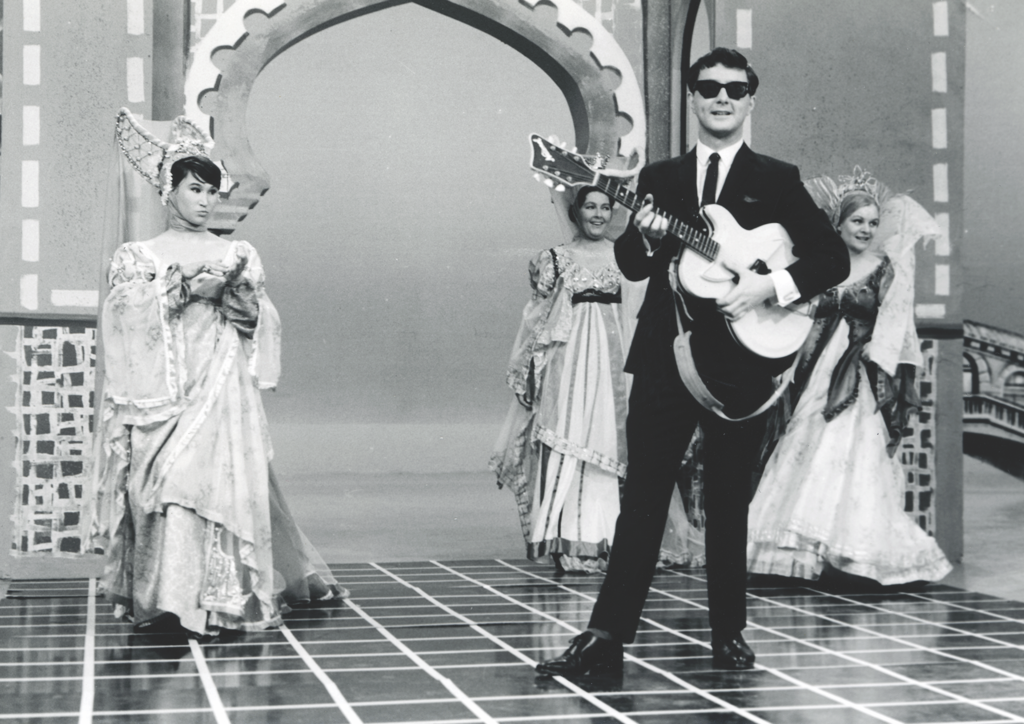
In 1960, the Australian Broadcasting Control Board stipulated that at least 40 per cent of transmitted content be Australian. However, it was only in 1967 that a specific quota for drama was put into place, and it was Crawford’s police dramas (beginning with the landmark Homicide in 1964) that helped ignite local drama production. In 1973, these quotas were replaced with the controversial points system, which further downgraded the appeal of variety. In 1975, Kennedy even condemned then–media minister Doug McClelland’s ‘utterly ineffective’ points system in an episode of The Graham Kennedy Show. His remarks were edited out before the show went to air, however, leading to his resignation from Channel Nine.[22]Blundell, op. cit., pp. 318–9.
In his 1977 autobiography, Newton presciently remarked that Brady ‘will be around for a long time to come’.[23]Bert Newton, Bert!: Bert Newton’s Own Story, Garry Sparke & Associates, Melbourne, 1977, p. 105. By that point, Brady was renowned not only for his work on variety shows, but also as television’s hardest-working quizmaster: throughout the 1970s, he had eleven shows for Grundy on the 0/10 Network (the precursor to Ten), including the highly successful The Moneymakers; its spin-off, Junior Moneymakers; the daytime programs Password and Get the Message; and Casino 10. Today, Brady is, professionally, the last man standing from his era. He enjoys a long-running stint on his Nightline program for 3AW radio and, for many of his older listeners, the program – not unlike IMT – has become an institution, a way of life. And, through the oral history he has provided here, Brady fills important gaps and offers fresh insights into our early television history.
Endnotes
| 1 | Mike McColl Jones, email to the author, 12 May 2018. |
|---|---|
| 2 | Philip Brady, interview with John Fife, National Film and Sound Archive of Australia (NFSA), Melbourne, 23 August 2013 – 13 January 2014. |
| 3 | Derham Groves, TeeVee at Sixty: Celebrating Sixty Years of Melbourne Television, 1956–2016, University of Melbourne Library, Melbourne, 2016, p. 31. |
| 4 | ‘3AW Presenter Recognised in Queen’s Birthday Honours List’, 3AW website, 11 June 2018, <https://www.3aw.com.au/3aw-presenter-recognised-in-queens-birthday-honours-list/>, accessed 16 August 2018. |
| 5 | For more on the early history of television in Australia, see the ‘TV at 60’ articles on Television.AU, <https://televisionau.com/category/tv-at-60>, accessed 16 August 2018. |
| 6 | See ‘Television Comes to Australia, 1956’, Fairfax Syndication, <http://professional.fairfaxsyndication.com/Collection/Television-Comes-to-Australia–1956-FXB81272>, accessed 16 August 2018. |
| 7 | Helen Tully, ‘Licence to … Watch TV?’, NFSA, <https://www.nfsa.gov.au/latest/radio-and-tv-licences>, accessed 16 August 2018. |
| 8 | Albert Moran, ‘Three Stages of Australian Television’, in John Tulloch & Graeme Turner (eds), Australian Television: Programs, Pleasures and Politics, Allen & Unwin, Sydney, 1989, p. 3. |
| 9 | ibid., p. 5. |
| 10 | Australian Television: A Ratings History, 1956–1998, ACNielsen Australia, Sydney, 1999, p. 16. |
| 11 | Sandra Hall, Supertoy: 20 Years of Australian Television, Sun Books, Melbourne, 1976, p. 85. |
| 12 | Graeme Blundell, King: The Life and Comedy of Graham Kennedy, Macmillan, Sydney, 2003, pp. 83–4. |
| 13 | Hall, op. cit., p. 33. |
| 14 | Moran, op. cit., p. 3. |
| 15 | Bruce Mansfield & Philip Brady, with Ian Oshlack, Tales from the Scrapbook, Portside Editions, Melbourne, 1993, p. xii. |
| 16 | Blundell, op. cit., pp. 37, 42. |
| 17 | ibid., p. 248. |
| 18 | ibid., p. 303. |
| 19 | Hall, op. cit., p. 94. |
| 20 | Larry Schwartz, ‘Golden Anniversary for Showbiz Stayer’, The Age, 24 April 2008, <https://www.theage.com.au/entertainment/golden-anniversary-for-showbiz-stayer-20080424-ge7002.html>, accessed 16 August 2018. |
| 21 | Moran, op. cit., p. 7. |
| 22 | Blundell, op. cit., pp. 318–9. |
| 23 | Bert Newton, Bert!: Bert Newton’s Own Story, Garry Sparke & Associates, Melbourne, 1977, p. 105. |
